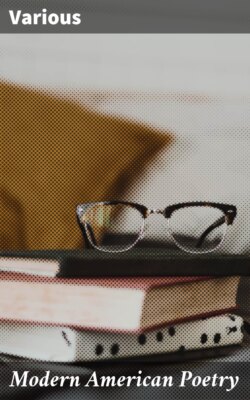Читать книгу Modern American Poetry - Various - Страница 8
На сайте Литреса книга снята с продажи.
RENASCENCE—1913
ОглавлениеTable of Contents
Suddenly the “new” poetry burst upon us with unexpected vigor and extraordinary variety. Moody and Markham were its immediate forerunners; Whitman its godfather. October, 1912, saw the first issue of Poetry: A Magazine of Verse, a monthly that was to introduce the work of hitherto unknown poets and to herald, with an eager impartiality, the various groups, schools and “movements.” The magazine came at the very moment before the breaking of the storm. Flashes and rumblings had already been troubling the literary heavens; a few months later—the deluge! For three years the skies continued to discharge such strange and divergent phenomena as Vachel Lindsay’s General William Booth Enters into Heaven (1913), James Oppenheim’s Songs for the New Age (1914), the first anthology of The Imagists (1914), Challenge (1914), Amy Lowell’s Sword Blades and Poppy Seed (1914), Lindsay’s The Congo and Other Poems (1914), Robert Frost’s North of Boston (1914), Edgar Lee Master’s Spoon River Anthology (1915), John Gould Fletcher’s Irradiations (1915), Carl Sandburg’s Chicago Poems (1916). By 1917, the “new” poetry was ranked as “America’s first national art”; its success was sweeping, its sales unprecedented. People who never before had read verse, turned to it and found they could not only read but relish it. They discovered that for the enjoyment of poetry it was not necessary to have at their elbows a dictionary of rare words and classical references; they no longer were required to be acquainted with Latin legendry and the minor love-affairs of the major Greek divinities. Life was their glossary, not literature. The new product spoke to them in their own language. And it did more: it spoke to them of what they had scarcely ever heard expressed; it was not only closer to their soil but nearer their souls.
